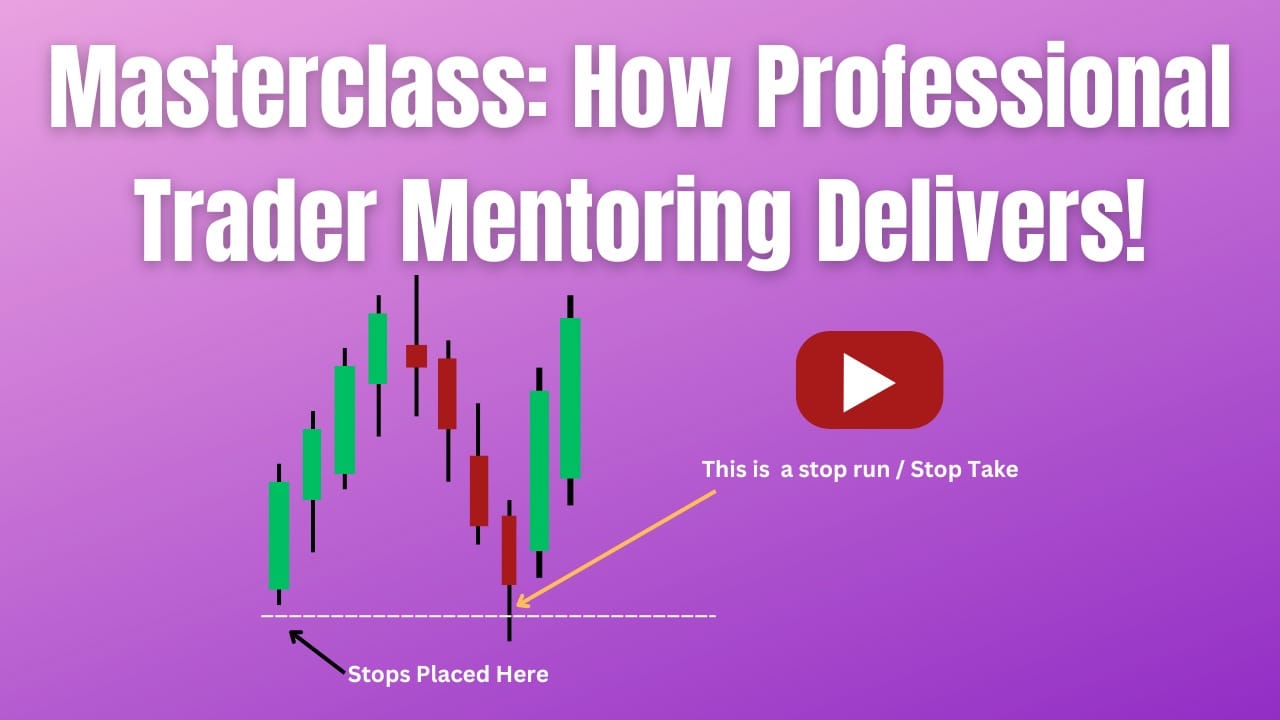EUR/JPY: The Stop Hunt Setup That Delivers
Student's EUR/JPY question reveals perfect stop hunt setup. Multi-timeframe analysis shows how false breakouts create 80+ pip opportunities. Professional trader mentoring accelerates execution skills.

Student Question Response: Multi-Timeframe Analysis in Action
This tutorial emerged from a student's Loom video submission asking about EUR/JPY positioning. What started as a personalized response became a perfect example of how professional trader mentoring accelerates learning through real-time market analysis. The quickest route to profitable trading success is through direct guidance from an experienced professional trader who can demonstrate these concepts in live market conditions.
Setting Up the Analysis Framework
I've got my chart template configured with the 30-minute, 15-minute, and 5-minute timeframes - this multi-timeframe approach is fundamental to professional trading analysis. The first thing that caught my attention on the EUR/JPY was the rail line formation running through the price action.
Let me show you exactly what I observed and how the setup unfolded.
Identifying the Pressure Point
On the initial timeframe, I immediately spotted a critical pressure point in the price structure. This is where professional trader mentoring becomes invaluable - recognizing these key levels comes from experience and proper guidance. The student's question was perfectly timed: "Where should I sell this market?"
The answer became clear when I switched to the 5-minute chart. Here's the sequence that developed:
The Setup Process:
- Rail line established on the higher timeframe
- Pressure point identified at the key resistance level
- Multi-timeframe confirmation using 15-minute and 5-minute charts
- Market behavior analysis around the critical zone
The Stop Hunt Pattern Recognition
What made this trade particularly educational was the student's observation. He mentioned that the price action "looked like a stop hunt" - and he was absolutely correct, even though he wasn't entirely sure at the time. This intuitive recognition is exactly what develops through professional trader mentoring and coaching.
The market behavior told the complete story: traders who had been selling on the way down placed their protective stops above the previous high. The market then rallied up, punched out those stops, and immediately reversed downward.
How to Confirm a Stop Hunt
The key question I often receive is: "How do you know if it's actually a stop hunt?" The answer lies in what happens next. Had the price broken through that resistance level and continued higher, it would have been a genuine breakout. Instead, the market couldn't sustain the move above the key level.
The confirmation sequence:
- Market approaches previous high
- Brief penetration takes out stops
- Immediate reversal and failure to hold above resistance
- Price drops into the lower floating zone
This subsequent action confirms the stop hunt pattern retrospectively.
Floating Zone Dynamics
Once the market completed the stop hunt and moved into the lower floating zone, the weakness began to play out systematically. This is where understanding market structure becomes crucial - and why professional trader mentoring is so valuable for developing this market sense.
In the floating zone, the market typically continues its directional bias with reduced volatility. The sell order placement directly under the stop hunt level provided an excellent risk-to-reward setup.
Trade Execution and Management
The sell order positioned just below the failed breakout level captured approximately 50 pips of the move, with the total session delivering over 80 pips of downward movement. This demonstrates the power of waiting for proper setups rather than trying to capture every pip of a move.
Key execution points:
- Entry: Below the failed breakout level
- Stop management: Above the stop hunt high
- Target: Lower floating zone
- Risk management: Don't try to capture every available pip
The Teaching Moment
This trade exemplifies why personalized coaching and professional trader mentoring represent the fastest path to trading success. The student's initial observation about the "stop hunt appearance" showed developing market awareness, but confirmation and execution required experienced guidance.
Through direct mentoring, traders learn to:
- Recognize developing patterns in real-time
- Confirm setups through multi-timeframe analysis
- Execute with proper risk management
- Adapt when market behavior provides new information
Professional Development Opportunity
If you're serious about developing these skills, consider that professional trader mentoring offers the most efficient learning path. Working directly with an experienced trader provides immediate feedback, real-time analysis, and personalized guidance that accelerates your development beyond what's possible through self-study alone.
The market will always provide opportunities like this EUR/JPY setup, but recognizing and executing them consistently requires proper training and ongoing support from a professional trader who understands both the technical and psychological aspects of successful trading.
This analysis demonstrates the power of multi-timeframe analysis and pattern recognition in forex trading. For personalized coaching and professional trader mentoring that can accelerate your trading development, consider direct mentorship opportunities that provide real-time guidance and feedback on your trading decisions.